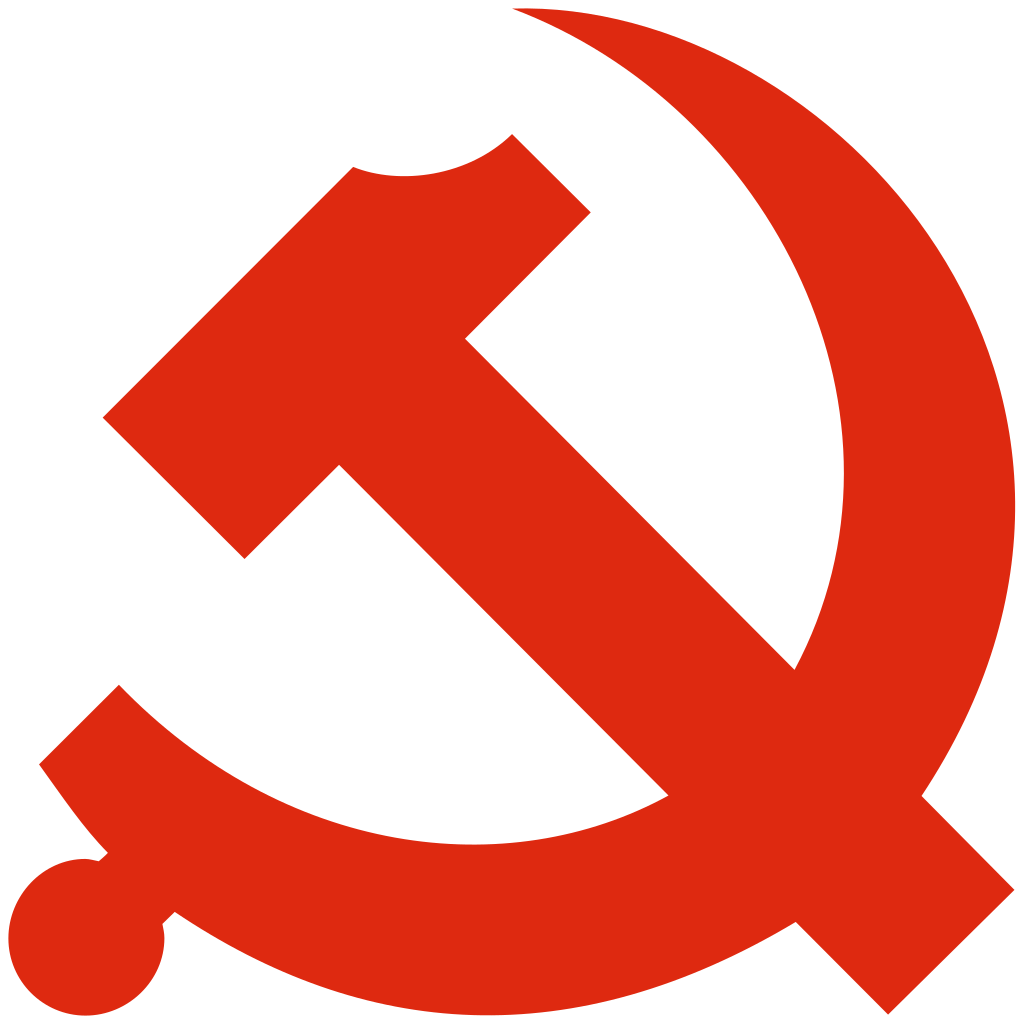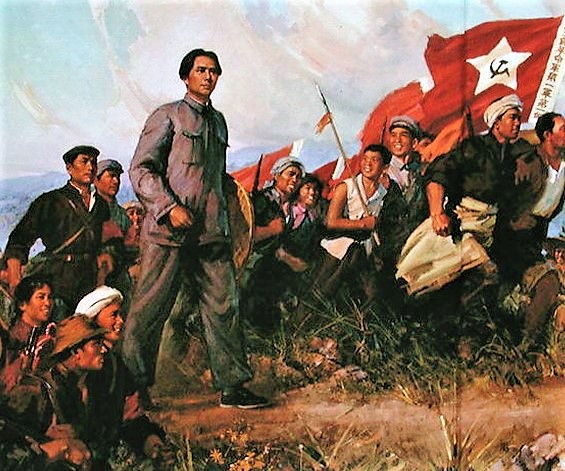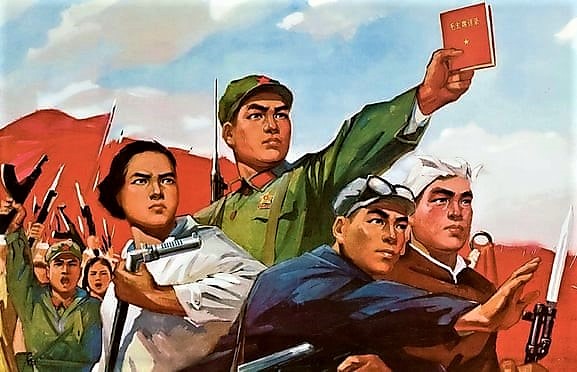HISTORICAL TIMELINE OF CHINA
In order to understand the historical background of China and how they have become America’s number one threat, we present this brief historical timeline. It is very important to review and study this timeline in preparation for the Queens Village Republican Club’s May 7th Zoom meeting on the threat of China with Gordon Chang. Historian, Jerry Matacotta was the main source and advisor for this timeline of Chinese history in the modern era. Relevant quotes were also selected from Bully of Asia by Steven Mosher.
 For more than 2000 years, the Chinese considered themselves the geographical and geopolitical center of the world… They believed their emperor to be the only legitimate political authority and regarded themselves as the highest expression of civilized humanity. -Steven Mosher, Bully of Asia, p. 10
For more than 2000 years, the Chinese considered themselves the geographical and geopolitical center of the world… They believed their emperor to be the only legitimate political authority and regarded themselves as the highest expression of civilized humanity. -Steven Mosher, Bully of Asia, p. 10
In all the world there is only one threat to the United States that must be classified as a disease of the heart. This is a country that long ago invented totalitarianism – the total subjugation of the individual to the state – and that still practices a modified form of this all-embracing political tyranny today. -Steven Mosher, Bully of Asia, p. 6
1839-1860 – Opium Wars. Two armed conflicts in China between the forces of Western countries and the Qing dynasty, which ruled China. Western powers were victorious and British won control of the opium trade in China and acquired Hong Kong. China became the weakest country in the world and resented any foreign influence. The major reason for China’s resentment of foreigners can be traced back to the Opium Wars, which became their rallying cry for nationalism.
The Opium Wars “… shook the empire to its core. The so-called “unequal treaties” that followed reduced China to a semi-colony of the Western powers. Western troops garrisoned China’s “treaty ports” – essentially, European colonies – and Western gunboats roamed its rivers.” -Steven Mosher, Bully of Asia, p. 16
1900 – Boxer Rebellion – Uprising of Chinese nationals against foreign influence in China. After several months of growing violence and murder against foreign and Christian presence in June 1900, Boxer fighters (Chinese martial artists), convinced they were invulnerable to foreign weapons, converged on Beijing with the slogan “Support the Qing government and exterminate the foreigners.” They were defeated by Japan, Germany, United States and other Western powers which sent troops to crush the rebellion.
“Non-Chinese have difficulty appreciating the depth of China’s grievances against the West and Japan resulting from these experiences. It was not merely that Western gunboats had twice defeated China in the Opium Wars; China had been defeated before, although never perhaps by organized drug runners. Nor was the bitterness caused simply by the dethronement of Confucian high culture by the West…. The underlying problem was this: China had dominated (in every sense – culturally, economically, militarily) its known world almost since the beginning of its recorded history. More than what is today called a superpower, it had been the hegemon for century after century, dynasty after dynasty, for over 2000 years. Then within the span of a few decades, it was cast down from this pinnacle of greatness by the Western powers and Japan and brought low, divided into spheres of influence, and partially carved up into colonies.” -Steven Mosher, Bully of Asia, p. 18
1912-1928 – After over two thousand years of imperial rule, the Republic of China was established in 1912 to replace the monarchy, in an attempt to bring some form of democracy to China. Sun Yat-sen served as the first president of the Republic of China and the first leader of the Nationalist Party of China. But China was chaotic, the Nationalist government was weak, and warlords controlled China.
 1921-1927 – The Communist Party of China (CPC or CCP) was founded in 1921. The CCP grew quickly, and by 1949 it had driven the Nationalist government from mainland China, leading to the establishment of the People’s Republic of China (PRC) in 1949. In 1920 until 1927 the CCP worked together with the Nationalist government to get rid of the warlords and build a powerful central government.
1921-1927 – The Communist Party of China (CPC or CCP) was founded in 1921. The CCP grew quickly, and by 1949 it had driven the Nationalist government from mainland China, leading to the establishment of the People’s Republic of China (PRC) in 1949. In 1920 until 1927 the CCP worked together with the Nationalist government to get rid of the warlords and build a powerful central government.
1926-1928 – Chiang Kai-shek, follower of Sun Yat-sen, became leader of the Republic of China in 1928. He led the Northern Expedition campaign of the Chinese Nationalist army allied with the Communists, defeating a coalition of warlords, ending their control of China, and reunifying China under a new Nationalist government of the Republic of China.
1927 – Midway through the Northern Expedition, the alliance broke down and Chiang Kai-shek purged the Communists inside the party. Although the Communists welcomed Chiang, he turned on them, killing 1,000’s. In response, the CCP founded the “Red Army”, to battle Chiang’s Nationalist Party army beginning the Chinese Civil War. Mao Zedong was appointed commander-in-chief of the Red Army.
1931 – The Empire of Japan invaded Manchuria, took over and established a puppet state, while China was involved in civil war. Chiang Kai-shek avoided a war with Japan in order to focus on defeating the Communists first.
“The political leader with the most experience fighting the CCP – first successfully and later much less so – was Nationalist leader Chiang Kai-shek. After the Japanese invasion of Manchuria in 1931, Chiang was under enormous pressure to declare war on the Empire of the Rising Sun. He refused, arguing that before the Japanese could be driven out of China, the Communist rebellion must first be put down. ‘First internal pacification, then external resistance,” he insisted…. Chiang stated: “The Japanese are like a disease of the skin, but the Communists are like a disease of the heart.” -Steven Mosher, Bully of Asia, p. 1
1934-1935 – Chiang Kai-shek’s Nationalist Party army defeated the Communists who begin a big retreat. Mao took the Red Army on the “Long March” into the mountains of Northern and Western China and consolidated his leadership as the head of the CCP. The Long March, the central event in Chinese revolutionary mythology, became the precursor of everything the CCP is today, and established Marxist–Leninism and Mao Zedong Thought (Maoism) as the Party’s guiding ideologies.
 “The Long March is a manifesto. It has proclaimed to the world that the Red Army is an army of heroes, while the imperialists and their running dogs, Chiang Kai-shek and his like, are impotent. It has proclaimed their utter failure to encircle, pursue, obstruct and intercept us. The Long March is also a propaganda force. It has announced to some 200 million people in eleven provinces that the road of the Red Army is their only road to liberation.” – Mao Zedong, On Tactics against Japanese Imperialism (December 27, 1935)
“The Long March is a manifesto. It has proclaimed to the world that the Red Army is an army of heroes, while the imperialists and their running dogs, Chiang Kai-shek and his like, are impotent. It has proclaimed their utter failure to encircle, pursue, obstruct and intercept us. The Long March is also a propaganda force. It has announced to some 200 million people in eleven provinces that the road of the Red Army is their only road to liberation.” – Mao Zedong, On Tactics against Japanese Imperialism (December 27, 1935)
1937 – Full-scale Japanese invasion of China. The Japanese scored major victories, capturing Beijing, Shanghai and the Chinese capital of Nanking in 1937, which resulted in the Rape of Nanking, which was an episode of mass murder and mass rape committed by Imperial Japanese troops against the residents of Nanking. That is why China despises the Japanese and any allies of Japan.
1939-1945 – Chiang Kai-shek and Mao made a temporary peace to form a united front of the Nationalists and Communists to fight against Japan.
1945 – Yalta Conference was the meeting of the heads of government of the three World War II allies, United States, United Kingdom, and Soviet Union. The Soviet Union pledged to fight Japan and attacked the Japanese in Manchuria. Soviet Union, Nationalists and Communists were all fighting the Japanese in Manchuria.
1945-1949 – After surrender of Japan, ending WW II, Mao turned on Chiang Kai-shek and the Chinese Civil War resumed. The power of the Communist Party grew considerably with skillful organization and propaganda envisioning the Red Army conducting guerrilla warfare in defense of the people. The Soviet Union supported the Red Army from Manchuria with their own weapons and tanks, and military supplies captured from the Japanese. The Nationalist forces were weak, and the war concluded with Communist victory in mainland China. Chiang Kai-shek and two million Nationalist soldiers retreated to the island of Taiwan, and Chiang set up the Republic of China. America protected Chiang Kai-shek, and the containment policy against potential Communist advance began.
1949 – Mao Zedong proclaimed the founding of the People’s Republic of China (PRC) and did not recognize Taiwan, treated them as a rebellious group. Mao took over every aspect of Chinese life. All economic and cultural activity, schools, military, re-education of all the people to the communist system were all controlled by the PRC. Land reform campaigns forcibly seized land from landlords and redistributed it among peasants, who were encouraged to overthrow and kill landlords. The campaign to consolidate the power of the CCP continued, suppressing counterrevolutionaries, with mass trials and murder of millions of Nationalist supporters, businessmen and intellectuals.
1950-1953 – The Korean War was a war between North Korea and South Korea. PRC supporting the North, fought the USA supporting the South. The war ended in a stand-off creating the Korean Demilitarized Zone (DMZ) to separate North and South Korea.
1958-1962 – Great Leap Forward was the PRC’s economic and social campaign. Chairman Mao Zedong launched the campaign to reconstruct the country from an agrarian economy into an industrial society through the formation of people’s communes. But the cost was nearly 100 million deaths from man-made famine and mass executions, since private farming was prohibited, and people were moved from farming to industrial production; thus people starved.
 1966-1976 – The Cultural Revolution, was a decade-long period of political and social chaos, launched by Mao Zedong, turning against his own Party, to purge the Communist Party of “bad thought,” i.e. capitalism and traditional Chinese culture, and re-impose Maoism as the dominant ideology in the CCP and China. Kids tuned on parents, students turned on teachers and friends on friends for not following the Little Red Book of Mao’s sacred thoughts. Mao’s way was the only thought. The Red Guards, a mass student-led paramilitary social movement, heeded Mao’s call to burn and destroy cultural artifacts, Chinese literature, paintings, religious symbols and temples.
1966-1976 – The Cultural Revolution, was a decade-long period of political and social chaos, launched by Mao Zedong, turning against his own Party, to purge the Communist Party of “bad thought,” i.e. capitalism and traditional Chinese culture, and re-impose Maoism as the dominant ideology in the CCP and China. Kids tuned on parents, students turned on teachers and friends on friends for not following the Little Red Book of Mao’s sacred thoughts. Mao’s way was the only thought. The Red Guards, a mass student-led paramilitary social movement, heeded Mao’s call to burn and destroy cultural artifacts, Chinese literature, paintings, religious symbols and temples.
1972 – President Richard Nixon visited the People’s Republic of China, where he met with Chairman Mao Zedong and Chinese Premier Zhou Enlai. This historical visit opened China to the rest of the world for trade. We opened American markets and welcomed Chinese products into the United States. We witnessed the rise of China, as they industrialized, learned Western technologies, copied the West, and quickly became an industrial superpower, without changing their foundation in communist political ideology. Statism is the economic system of China, corporations run by the CCP, state-run industries.
1990-today – Business leaders and the Communist Party have joined together to became one entity in order to unite economic and political power for the benefit of the elite class, not for the people. Globalist elites of America are tied in with the elites of China. The Clintons, Biden, Bloomberg, Bill Gates, Steve Jobs, Mark Zuckerberg, and there are many other examples of globalists including McKinsey & Company, whose former senior partner Peter Walker was recently exposed on Tucker Carlson fawning over China. The globalist media as well, NYT, Washington Post, MSNBC, CNN, ABC News, Newsweek, and all the others; these Western globalist elites hate the West. They hate America. They foresee a one-world order run by technocrats, without freedom or democracy. They see China’s rise to dominate the West as a positive thing, so they can build up their own bottom lines. They see China as a friend and America as the enemy. They are all anti-Trump because Trump is anti-globalist and he is standing up against the threat of China’s economic and political domination.
President Clinton gave China most-favored-nation status, starting free trade with China. He brought them in as global players in the world economy, pushed Congress for their entry into the WTO, made favorable trade deals, and moved US manufacturing to China, including American aerospace, nuclear, missile, and military technology, and pushed to open up the U.S. industrial base to Chinese offshoring. Presidents Bush and Obama continued these favorable China policies, to foster our nearly total dependence on Chinese manufacturing. President Trump was the first president to stand up to the threat of China and to stop their outrageous “theft of intellectual property,” “illegal dumping,” and “devastating currency manipulation.”
“China is already at war with us in the economic sphere. It consistently flouts the rules and breaks its promises. Its goal is to outstrip the United States, and it is not averse to undermining the existing international economic and political order to do so.” -Steven Mosher, Bully of Asia, p. 240
“Few Americans have yet grasped either the depth of China’s historic grievance against the West or its vengeful envy of the United States in particular, or the breadth of its resurgent imperial ambitions. China is not just an emerging superpower with a grudge, though that would be worrisome enough. It is the hegemon, waiting to reclaim its rightful position as the center of the world.” -Steven Mosher, Bully of Asia, p. 32
“Only the Chinese people, by overthrowing the current Communist dynasty in favor of democratic rule, can … diminish its relentless drive for domination.” -Steven Mosher, Bully of Asia, p. 291



